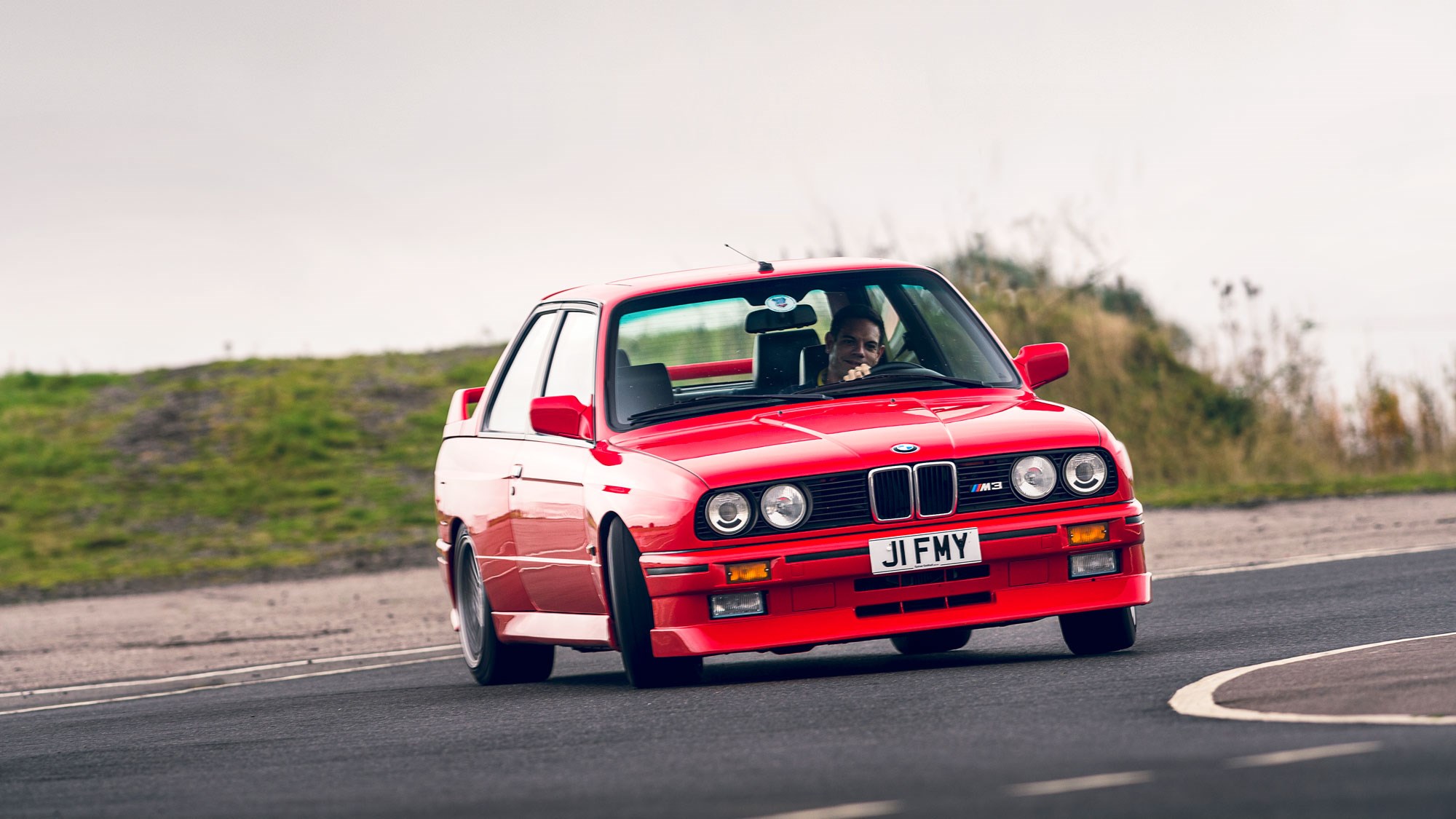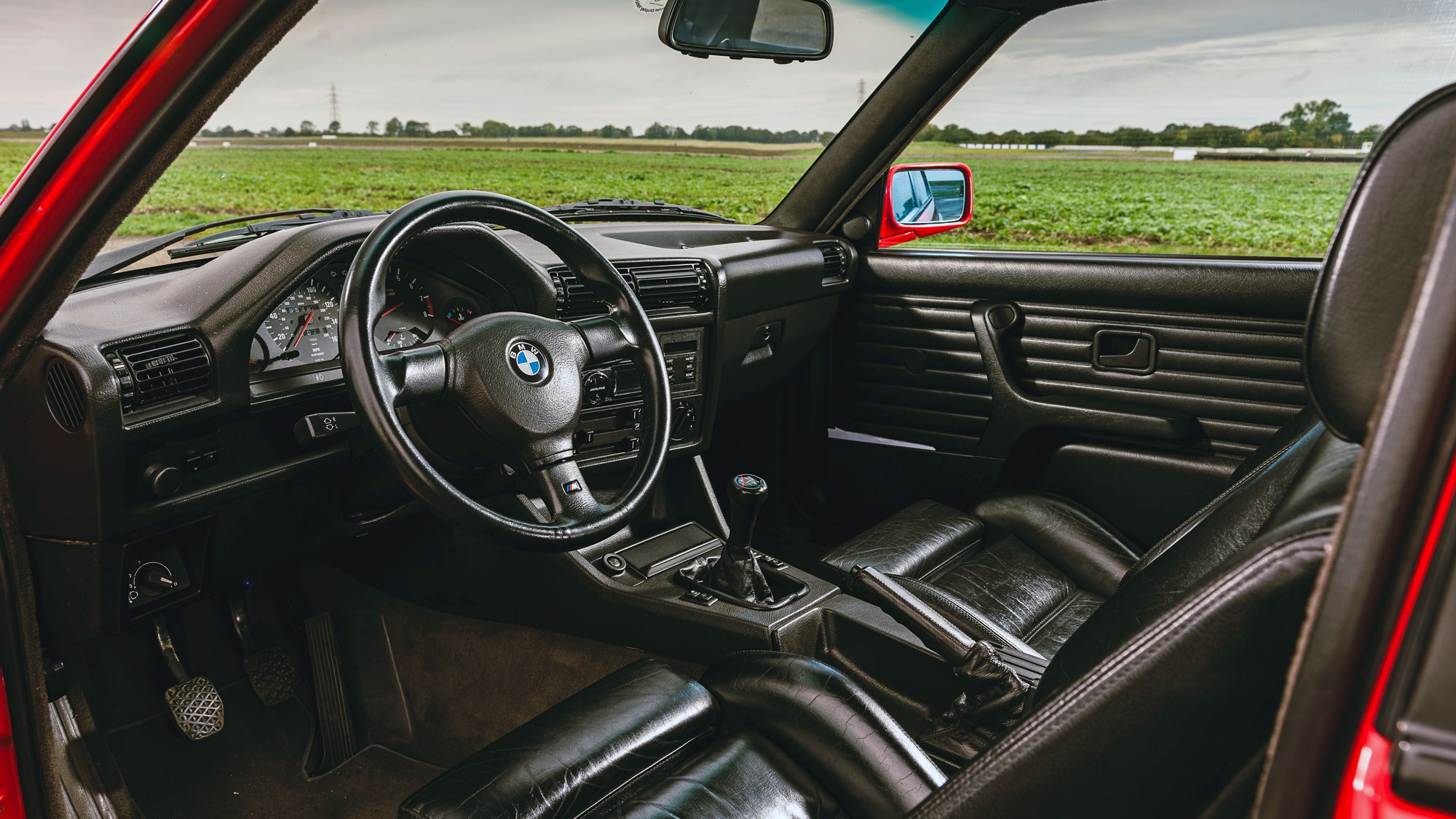► The original and the best E30?
► Launched in ’86
► Modern Classics revisits the car that began the M3 legend
For many the best M3 debate starts and ends here. The very first M3, a car built for Group A homologation purposes, is The One. Radically altered from the car on which it’s based for enhanced aero, handling and reduced mass, forming the basis of one of the most successful racing cars of all time, possessed of the coolest box ‘arches on planet Earth, built in limited numbers and in left-hand drive only, the desirability factor is simply off the scale. No M3 since has been developed with such purity of purpose. However, let’s judge the car on its own merits rather than the myth and legend.
E30 vs 190E Cosworth
What are the actual specs?
Launched in ’86 the M3 features the 2.3-litre four-cylinder ‘S14’ engine, which shares its cast iron block with the humble M10 motor mated to a new four-valve head derived from the M5’s S38 straight-six, individual throttle bodies and machined intake and exhaust ports.
Compact, highrevving and tough (the M10 block was also revving used in F1 and withstood 1400bhp with qualifying boost), it was the perfect engine for Group A even if it meant a break from BMW’s growing tradition of silken straight-sixes. It’s hooked-up to a five-speed dogleg manual gearbox, with first on a dogleg.
Suspension is by struts up front and semi-trailing arms at the rear. Early M3s are rated at 200bhp and 176lb-ft, later jumping to 215bhp with the Cecotto/ Ravaglia special editions in 1989 (this became the standard engine in September of the same year) and finally a capacity hike to 2.5-litres for the final SportEvolution cars (December ’89 to March ’90) saw power rise to 238bhp.
The E30 M3 weighs around 1200kg. Reckon on 0-60mph in around 6.7-seconds and a top speed of over 140mph…
The heart of a touring car
Circuit competition was where the M3 really earned its stripes and that was down, in no small part, to its advanced engine. The S14 was part M10 four-pot and scaled=-own M88 six-cylinder. In fact, the first prototype actually used the famous six-pot’s cylinder head, with the last two ports blanked off.
Work on the S14 progressed at a frantic pace with the engineering team, led by Paul Rosche, producing its first running prototype in just two weeks. Rosche had been responsible for the M88 so his joined-up thinking perhaps wasn’t surprising.

The S14 came in three displacements beginning with a 2.3-litre at launch in 1986. This grew to 2.5-litres in later Evolution variants. But there was another, lesser known configuration, a 2.0-litre made for the Italian tax-break special 320iS model. All S14s use computer controlled Motronic fuel injection, individual throttle bodies, double row timing chains and a 93mm bore with either an 84mm (2.3) or an 87mm (2.5) stroke.
These over-square engines love to rev and produce in excess of 350bhp in race tune without a turbo. Easily over the 100bhp-per-litre benchmark and enough to win numerous touring car championships.

What’s it like to drive?
You won’t believe it when you first jump in an E30 M3. Even Andrew Landell’s lovely Brilliant Red example on non-original but droolworthy Alpina wheels feels pretty torque light and rather sluggish to start with. And that despite a carbon airbox, engine remap and full exhaust system resulting in around 245bhp.
Throttle response is gorgeously sharp but there’s just not that much power to play with. The steering is slow, too. So while you’ll marvel at how small the E30 feels, the wonderful visibility and the hard-edged four-cylinder soundtrack you might wonder exactly where the fireworks are hiding.
Don’t give up now. Just re-educate yourself on how to extract the best from an M3. Don’t expect a surfeit of power over grip, a wide power band and easily accessed oversteer.
Getting into the groove
The E30 demands you work. In fact, you almost have to put any mechanical sympathy to one side and really, really thrash the hell out of it before the magic is revealed. Work the engine way up in the rev range, snick through the long but oddly precise shifts as quickly as you can manage and hustle the chassis…

Push through the initial softness, don’t be distracted by the slow steering ratio and trust the car to grip. It will, and you’ll rarely trouble the limit of the front tyres.
In fact, you rarely experience under- or oversteer other than in fleeting moments telegraphed beautifully through the whole being of the car. Mostly the E30 is just neutral and always ready for the next input.
Such is its composure it allows you to compress every phase of a corner into a seamless whole, the car eager and balanced and soaking up all the revs and cornering load you can throw at it.
Andrew’s is the best E30 I’ve driven, I think. The extra power adds just enough bite to the experience to give it that miniracer vibe. Standard M3s can feel a little underwhelming but this carefully tweaked example reveals the motorsport pedigree within and it really hits the spot.
Small, sharp, utterly glorious to look at and with innate motorsport cool, it was a hell of an act to follow.